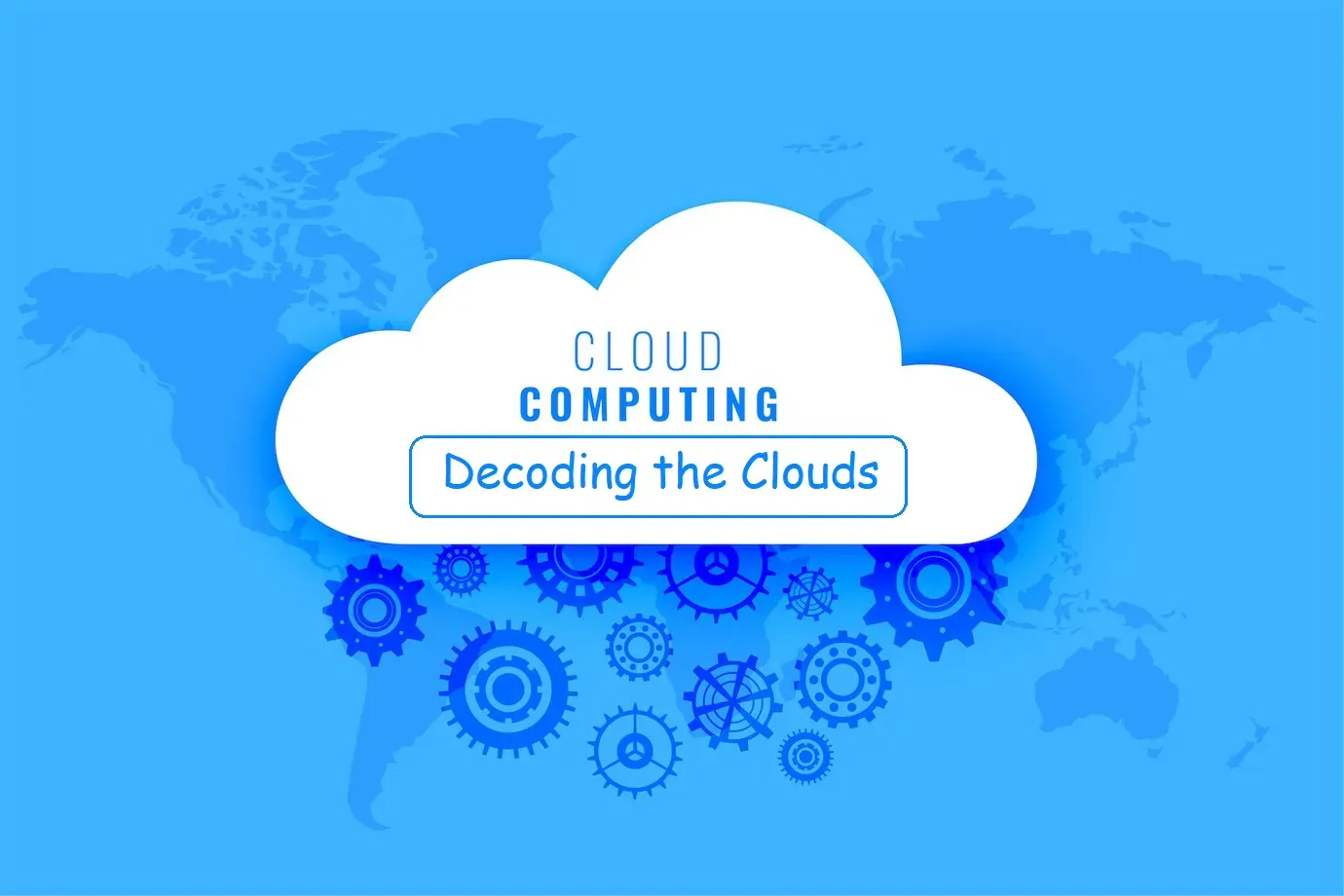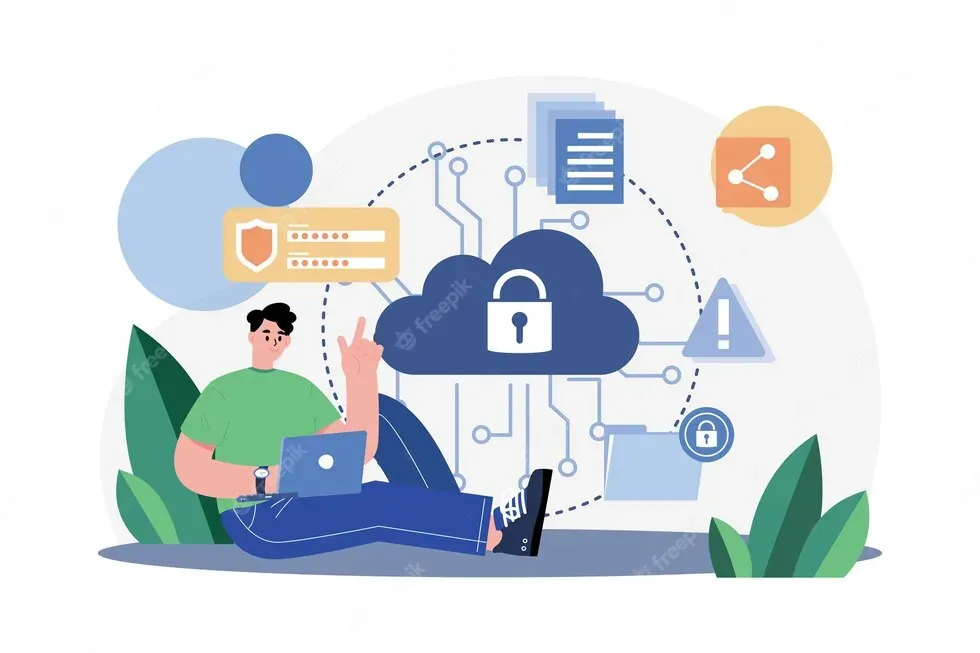 Introduction
Introduction

We are living in an era where the buzzwords 'Cloud Computing' have permeated all realms of technology. From storage solutions for personal photos to large-scale, enterprise-level operations, cloud computing has revolutionized the way we store, process, and utilize data. But what exactly is cloud computing? This guide aims to unravel the concept, exploring its types, benefits, risks, and how it continues to redefine the tech landscape.
Understanding Cloud Computing
At its core, cloud computing is the delivery of on-demand computing services - from applications to storage and processing power - typically over the internet and on a pay-as-you-go basis. Instead of owning their own computing infrastructure or data centres, companies can rent access to anything from applications to storage from a cloud service provider.
How Cloud ComputingWorks
In simple terms, cloud computing provides a way for users to access servers, storage, databases, and a broad set of application services over the internet. A cloud services platform owns and maintains the network-connected hardware required for these application services, while you provision and use what you need via a web application.
Types of Cloud Computing
Public Cloud
Public clouds are owned and operated by third-party cloud service providers, who deliver their computing resources like servers and storage over the Internet. Microsoft Azure, Google Cloud, and Amazon Web Services are examples of public clouds, with services provided using a shared infrastructure.
Private Cloud
A private cloud refers to cloud computing resources used exclusively by a single business or organization. The private cloud can be physically located at the company’s on-site data center, or it can be hosted by a third-party service provider.
Hybrid Cloud
Hybrid clouds combine public and private clouds, bound together by technology that allows data and applications to be shared between them. This allows businesses to enjoy the flexibility of the public cloud for non-sensitive operations and use the private cloud for sensitive or mission-critical operations.
Key Services in Cloud Computing
- Infrastructure as a Service (IaaS): In IaaS, third-party providers host infrastructures such as storage, hardware, servers, and network components for users. It's akin to renting an infrastructure, thus eliminating capital expenses for organizations.
- Platform as a Service (PaaS): PaaS offers a platform for developers to build applications and services over the Internet. This service includes infrastructure - servers, storage, and networking - but also middleware, development tools, business intelligence (BI) services, database management systems, and more.
- Software as a Service (SaaS): SaaS delivers software over the internet on a subscription basis. Providers host and manage the software application and underlying infrastructure, and handle any maintenance, like software upgrades and security patching.
Benefits of Cloud Computing
- Cost Efficiency: Cloud computing eliminates the expense of setting up and running on-site data centers, which often include racks of servers, electricity for power and cooling, and IT experts for managing the infrastructure.
- Speed and Scalability: Most cloud providers offer self-service and on-demand services, so vast amounts of computing resources can be provisioned in minutes. This gives businesses a lot of flexibility and takes the pressure off capacity planning.
- Productivity Enhancement: On-site data center maintenance (hardware setup, software patch updates, etc.) can be time-consuming. Cloud computing removes the need for many of these tasks, allowing IT teams to spend time achieving more important business goals.
- Performance: The biggest cloud computing services run on a worldwide network of secure data centers, upgraded to the latest generation of fast and efficient computing hardware. This offers several benefits over a single corporate data center, including reduced network latency for applications and greater economies of scale.
- Risks and Challenges: While cloud computing has its perks, it also comes with risks. Data security and privacy are major concerns in cloud computing. Despite advanced security features, a cloud service is always susceptible to attacks. The risk increases when sensitive data is involved.
Moreover, organizations may face issues with data and application portability. While most cloud providers ensure high levels of uptime, the user has no control over potential downtime incidents, leading to possible business operation disruptions.
The Relationship Between Edge Computing and Cloud Computing
Edge computing and cloud computing are two paradigms that complement each other. While cloud computing relies on centralized data centers to process and store data, edge computing pushes the computational process closer to the data source (or "edge" of the network) to reduce latency and bandwidth use.
In essence, edge computing can be seen as a distributed layer that complements the centralized system of cloud computing. By performing computations at the edge of the network, data latency is reduced, leading to faster, real-time data processing. This is particularly beneficial in applications where real-time data processing is crucial, such as autonomous vehicles and smart homes.
Key Enabling Technologies of Cloud Computing
- Virtualization: This is the foundation of cloud computing. It allows multiple users and applications to share the resources of a single physical server, effectively creating a "virtual" machine for each user.
- Broad Network Access: Cloud services are typically available over the network and accessed through standard mechanisms that promote use by various client platforms (e.g., mobile phones, laptops, and workstations).
- On-demand Self-service: This allows users to unilaterally provision computing capabilities, such as server time and network storage, as needed without human interaction with each service provider.
- Resource Pooling: The provider's computing resources are pooled to serve multiple consumers using a multi-tenant model, with different physical and virtual resources dynamically assigned and reassigned according to consumer demand.
- Measured Service: Cloud systems automatically control and optimize resource usage by leveraging a metering capability at some level of abstraction appropriate to the type of service (e.g., storage, processing, bandwidth, and active user accounts).
Characteristics of Cloud Computing
- On-demand Self-service: A user can unilaterally provision computing capabilities, such as server time and network storage, as needed automatically without requiring human interaction with the service provider.
- Broad Network Access: Capabilities are available over the network and accessed through standard mechanisms that promote use by heterogeneous thin or thick client platforms (e.g., mobile phones, tablets, laptops, and workstations).
- Resource Pooling: The provider's computing resources are pooled to serve multiple consumers using a multi-tenant model, with different physical and virtual resources dynamically assigned and reassigned according to consumer demand.
- Rapid Elasticity: Capabilities can be elastically provisioned and released, in some cases automatically, to scale rapidly outward and inward commensurate with demand.
- Measured Service: Cloud systems automatically control and optimize resource use by leveraging a metering capability at some level of abstraction appropriate to the type of service (e.g., storage, processing, bandwidth, and active user accounts).
Security Risks of Cloud Computing

While cloud computing provides many benefits, it also brings with it certain security risks:
- Data Breaches: In a cloud computing setup, data is often stored with a third-party provider, increasing the risk of unauthorized access and data breaches.
- Data Loss: Cloud data can also be lost due to a malicious attack, accidental deletion, or physical catastrophes such as a fire or earthquake.
- Insecure APIs: Cloud services are often accessed through APIs, and if these are insecure, they can be exploited by attackers.
- Insufficient Due Diligence: When adopting cloud services, some organizations may not perform sufficient due diligence and understand the security implications fully.
- Abuse and Nefarious Use of Cloud Services: Cloud services can be used by malicious actors to spread malware or carry out other nefarious activities.
It's crucial for organizations to understand these risks and implement proper security measures to protect their data and applications in the cloud.
The Future of Cloud Computing
As we look forward to the future of cloud computing, trends like AI, Machine Learning, and IoT will continue to drive the growth of cloud services. Multi-cloud and hybrid cloud architectures will likely dominate the cloud computing landscape. Edge computing is expected to reshape the cloud ecosystem by pushing data processing closer to the source, reducing latency, and improving speed and reliability.
Some Points to Know
What is an Instance in Cloud Computing?
An instance in cloud computing refers to a virtual server in the cloud. This virtual server can be used like any physical server, running applications and services, hosting websites,
What is Eucalyptus in Cloud Computing?
Eucalyptus is a paid and open-source software for building Amazon Web Services (AWS)-compatible private and hybrid cloud computing environments. It was originally developed by the company Eucalyptus Systems and is an acronym for Elastic Utility Computing Architecture for Linking Your Programs To Useful Systems.
What is Aneka in Cloud Computing?
Aneka is a software platform for developing cloud computing applications. It is a pure Platform as a Service (PaaS) solution for cloud computing and can be deployed over a network of computers, a multicore server, a data center, a virtual cloud infrastructure, or a combination thereof.
What is Agility in Cloud Computing?
Agility in cloud computing refers to the ability to rapidly develop, test, and launch applications that drive business growth in this fast and constantly changing IT environment. Cloud technology provides businesses with a key means of promoting agility, which is an important tool in the enterprise to impulse towards enriched adaptability.
Conclusion
Cloud computing has become an integral part of the global business landscape due to its accessibility, cost-effectiveness, and flexibility. Despite the challenges and risks involved, the relentless march of technology indicates a cloud-centric future. As businesses continue to adopt and adapt to this model, understanding the fundamentals of cloud computing is crucial to leveraging its full potential.
Whether you're a small business looking to scale or a large enterprise aiming for more efficient data management, cloud computing offers a myriad of solutions. The key is understanding how best to harness and integrate these solutions to power your specific business needs.
Frequently Asked Questions
Who is the father of cloud computing?
The term "father of cloud computing" is often used to refer to John McCarthy, a computer scientist who, in the 1960s, proposed the idea of computation being delivered as a public utility. However, many other individuals and companies have contributed to the development and evolution of cloud computing.
Does cloud computing require coding?
While it's possible to use cloud computing services without knowing how to code, having coding skills can greatly enhance your ability to interact with and utilize cloud services. Certain aspects of cloud computing, such as creating cloud-based applications or automating tasks in the cloud, do require coding skills.
What is cloud computing replacing?
Cloud computing is replacing traditional on-premises computing infrastructure. Instead of organizations having to invest in and maintain their own servers, storage, and networking equipment, these resources can be accessed on-demand from a cloud service provider.
Which is the most essential concept related to cloud computing?
One of the most essential concepts related to cloud computing is the idea of "on-demand availability". This concept means that computing resources, like processing power or storage, can be accessed whenever and wherever they are needed, without the need for significant upfront investment or ongoing maintenance.
Which delivery model is an example of a cloud computing environment?
There are three main models:
- Infrastructure as a Service (IaaS)
- Platform as a Service (PaaS)
- Software as a Service (SaaS).
In an IaaS model, a provider offers virtualized computing resources over the internet. In a PaaS model, a provider delivers a platform for the development, testing, and deployment of applications. In a SaaS model, a provider delivers Software as a Service (SaaS). In a SaaS model, a provider delivers applications over the internet on a subscription basis. Common examples include email, calendaring, and office tools (such as Microsoft Office 365).